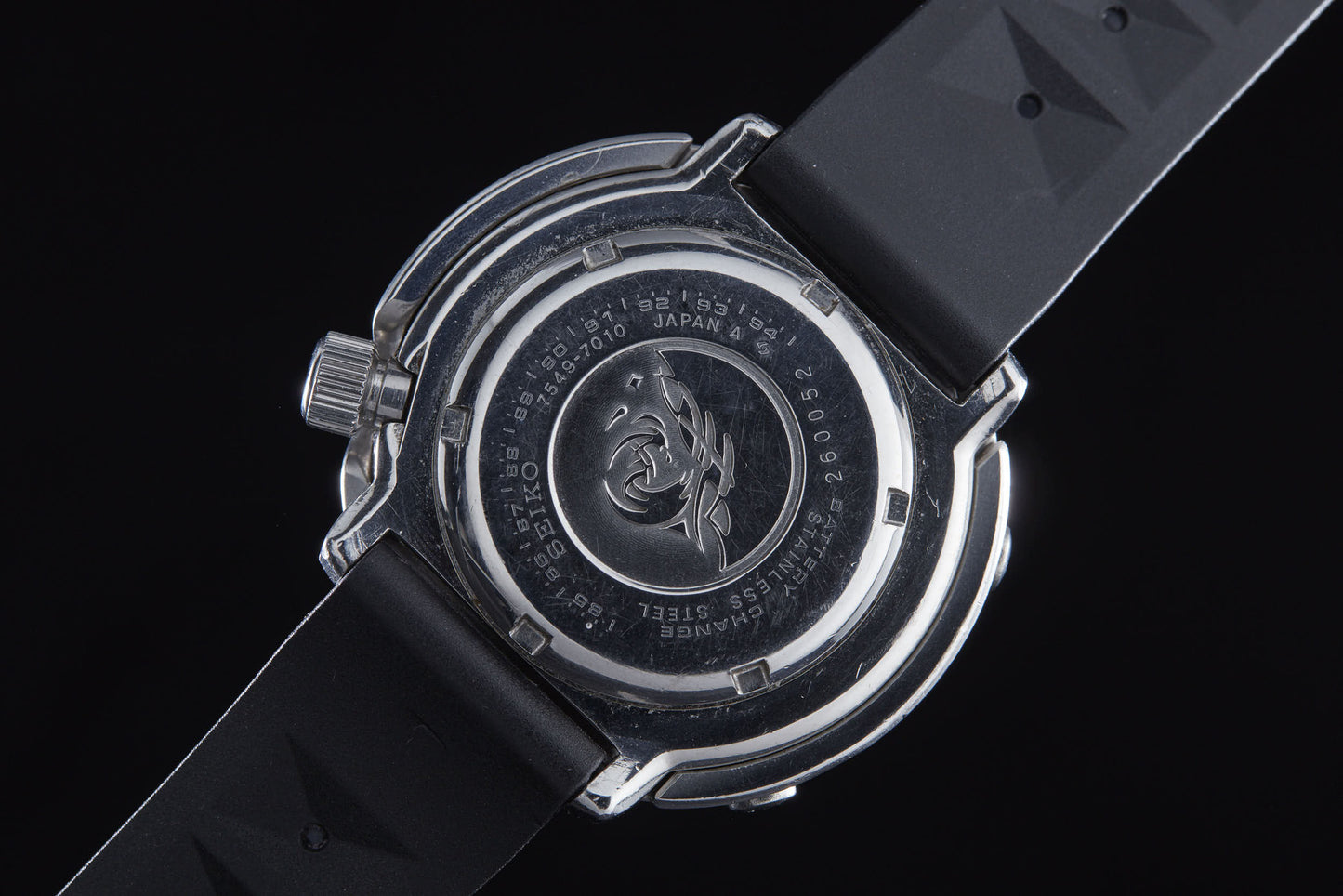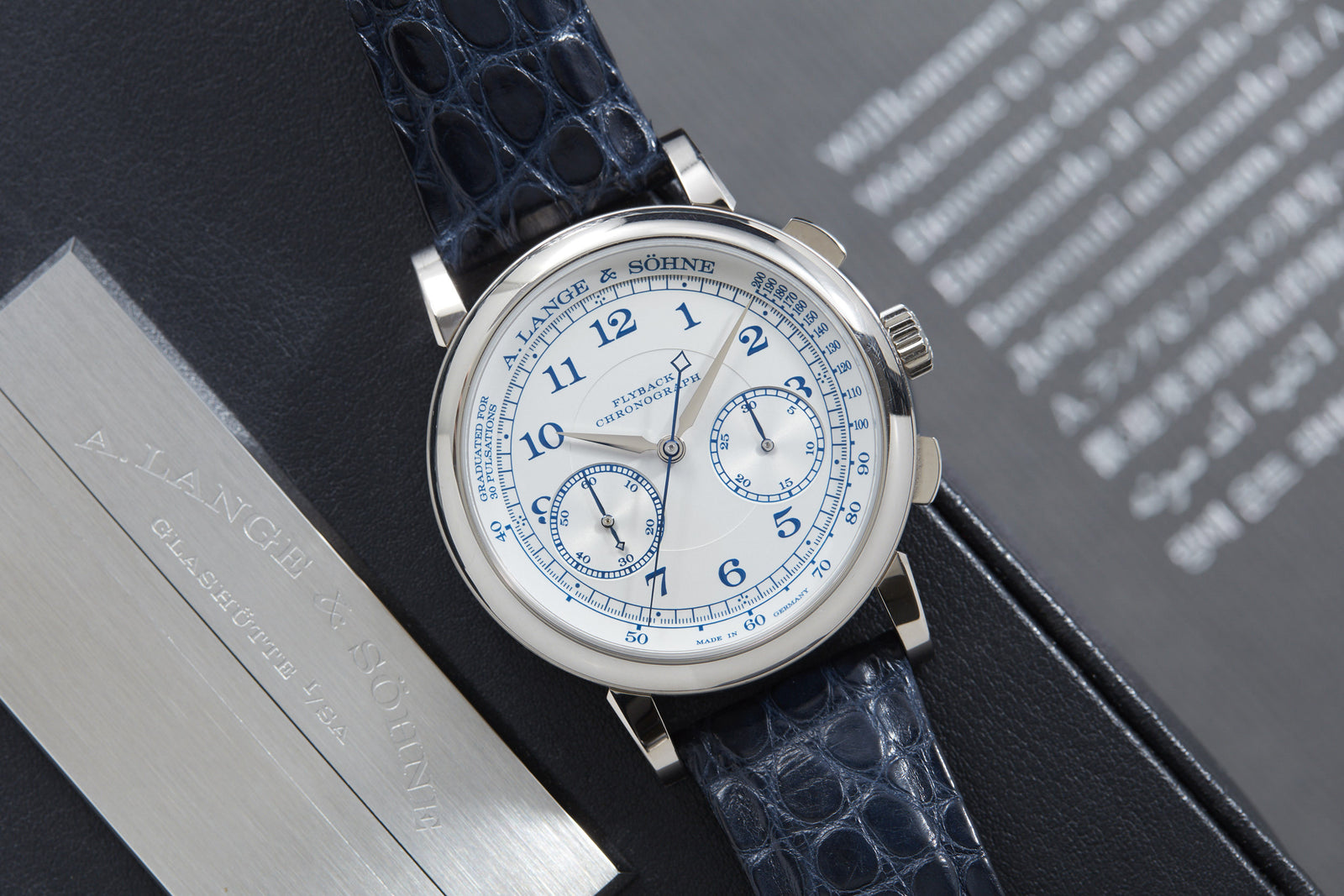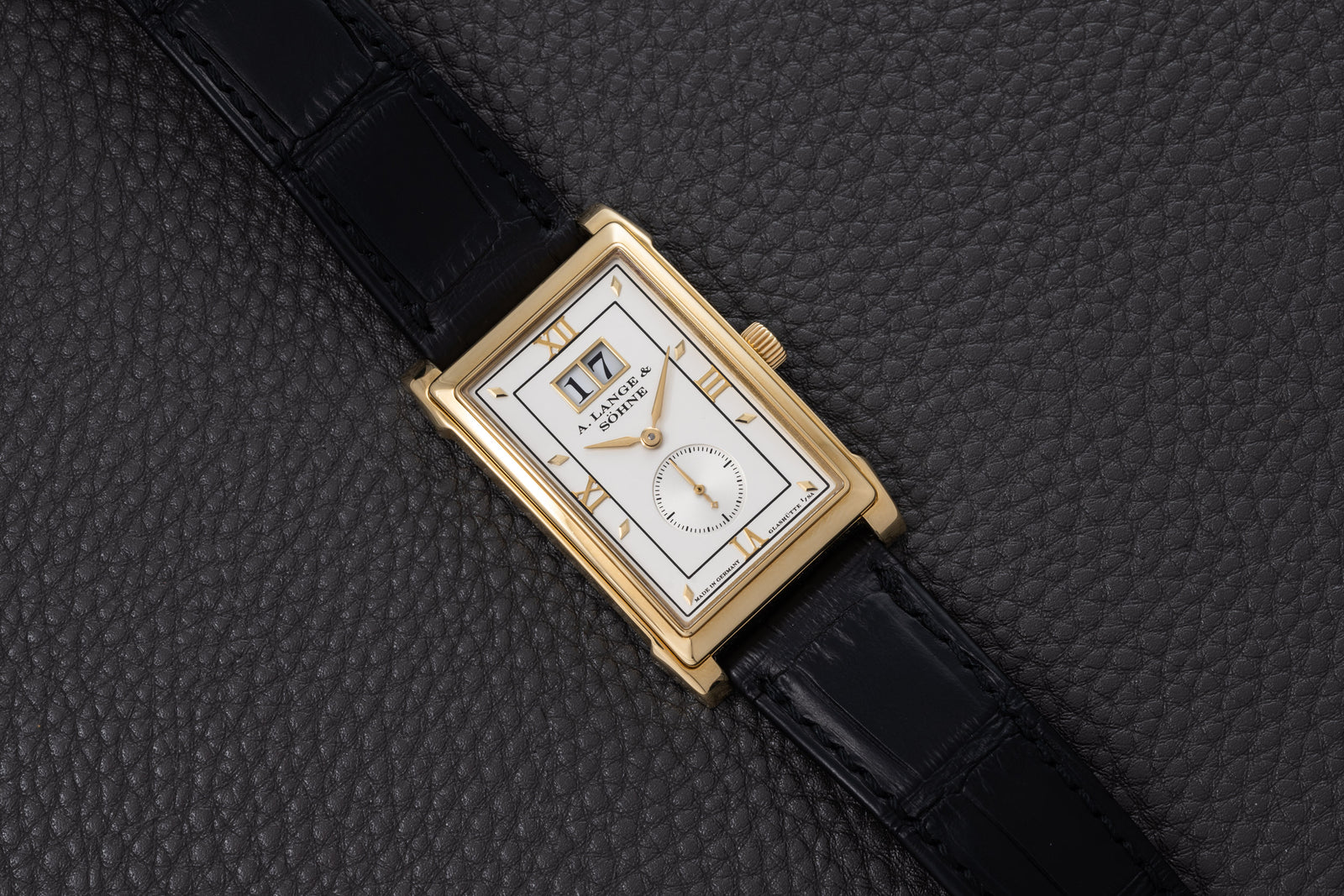Seiko Baby Tuna
- Soldspan>
- Sold
Why We Love it
–
Why We Love it
–It started with a letter.
In 1968, a disgruntled professional diver in Hiroshima wrote to Seiko to complain that the dive watch he had been using simply was not robust enough. When exposed to prolonged pressure at depth, the watch filled with helium, he wrote. The crystal would pop off, rendering useless a vital piece of equipment.
Seven years and 20 patents later, the first Seiko Tuna emerged...
Seiko had released its first dive watch in 1965, the Reference 6217 (or 62-MAS). The 62-MAS was water-resistant to 150 meters and had a rotating bezel, luminous hour markers, and a 17-jewel movement (Calibre 6127) with a beat rate of 18,000. It was an excellent effort, competitively-priced compared to Swiss divers, but for Seiko, it was only the beginning.
Seiko followed the 62-MAS with the 6159, which represented the pinnacle of Seiko's achievement in dive watches. Introduced in 1968, the Reference 6159-7001 was powered by the Calibre 6159A, a hi-beat (36,000 bph) movement that was also used in the Grand Seikos of the time. The monocoque case gave the 6159 increased water resistance to 300 meters and laid the groundwork for the wildly successful Seiko Marine Master divers of today.
Yet as the diver pointed out in his letter, even the 6159 proved no match to the rigors of saturation diving, in which divers lived at depth for prolonged periods.
The engineers at Seiko saw the letter as a challenge, one that demanded to be met. A team led by Ikuo Tokunaga set out to create the first dive watch designed specifically for saturation diving. In creating what would become the Tuna, the engineers didn't rely on the tried-and-true--simply because what they had tried was no longer true.
At the time Seiko was developing the Tuna, Rolex, Omega, and DOXA had already taken saturation diving into account when creating their dive watches. The Sea-Dweller, PloProf, and Conquistador all contained helium escape valves that would prevent the build-up of helium in the watches. But rather than simply incorporate a HEV into an existing watch and have done with it, Mr. Tokunaga saw how Seiko could develop a watch that was even better than all the others, using a completely new type of case.
Tokunaga and his team devised a circular, titanium one-piece or monocoque case with a special "L type" gasket, surrounded by a titanium shroud coated with ceramic. The crystal was held in place with a locking ring. This eliminated the need for a Helium Escape Valve, resulting in a watch that looked entirely different from anything that had ever before been seen.
The first Tuna, Reference 6159-7010, was released in 1975, after seven years of development, but Seiko didn't stop there.
In the late 1960s and early 1970s, Seiko was considered the masters of the Quartz technology--after all, they had been the first to implement a Quartz movement in a commercially-available wristwatch. By 1978, Seiko incorporated it into the Tuna line. Though contemporary collectors may look down upon quartz technology, we must remember that it represented the pinnacle of horological achievement at the time, guaranteeing unprecedented accuracy.
Furthermore, since it was more or less still in its infancy (at least in wristwatches), it was considered a luxury.
The first quartz Tuna, Reference 7549-7000 (released in 1978), is often referred to as the "Golden Tuna" by collectors due to the golden hue of the nitride coating on the titanium case. At 49mm the Golden Tuna may be smaller than its 51mm predecessor, but 49mm is large even by today's standards. So Seiko followed the Golden Tuna with the youngest of the series, the Reference 7459-7010, which collectors have given the nickname Baby Tuna.
At a slimmer, svelter 46mm, this particular has all the charms of its predecessors (and all the quality construction), just at a more wearable size. This one features day and date wheels in English and French (ooo la la). On a Tropic rubber strap, this Baby is ready for the summer sunshine.
A:S Guarantee
+
A:S Guarantee
+Our Pledge
Analog:Shift stands behind the authenticity of our products in perpetuity.
Condition
Since our pieces are vintage or pre-owned, please expect wear & patina from usage and age. Please read each item description and examine all product images.
Warranty
We back each Analog:Shift vintage timepiece with a two-year mechanical warranty from the date of purchase.
International Buyers
Please contact us prior to purchase for additional details on shipping and payment options.
Shipping & Returns
+
Shipping & Returns
+All of our watches include complementary insured shipping within the 50 states.
Most of our products are on hand and will ship directly from our headquarters in New York City. In some cases, watches will be shipped directly from one of our authorized partners.
We generally ship our products via FedEx, fully insured, within 5 business days of purchase. An adult signature is required for receipt of all packages for insurance purposes. Expedited shipping is available at an additional cost. We are also happy to hand deliver your purchase in Manhattan or you may pick it up at our showroom.
Returns must be sent overnight or by priority international delivery, fully insured and paid for by the customer. A restocking fee may apply. Watches must be returned in the same condition as initially shipped.
We welcome international buyers, please contact us prior to purchase for additional details on shipping and payment options.








Seiko Baby Tuna
- Soldspan>
- Sold







































